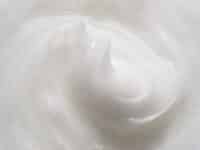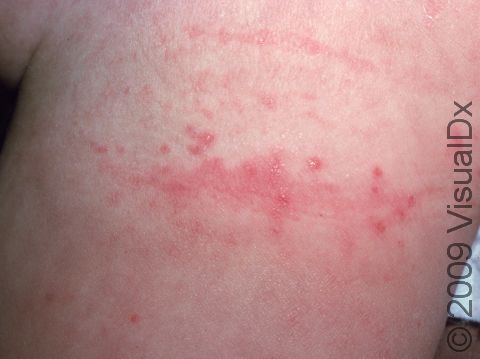
Diaper Rash (Irritant Diaper Dermatitis)
Diaper rash (irritant diaper dermatitis) occurs when an infant’s sensitive skin is exposed to urine and stool, coupled with the diaper rubbing and chafing the skin, a tight-fitting diaper, or a diaper being left on too long. Diarrhea can cause or worsen the baby’s diaper rash.
Who's At Risk?
Diaper rash may occur in anyone who wears diapers. It is an extremely common condition in infants.
Signs & Symptoms
Diaper rash appears as flat areas, papules (small, solid bumps), or plaques (bumps larger than a thumbnail), usually limited to any area that is covered by a diaper. The area of skin covered by the diaper will appear red and irritated, except for the skin’s folds, which are protected from direct contact with the diaper. Redness may be especially severe where the skin meets the edges of the diaper, and raw, open skin may also be seen in severe cases. In darker skin colors, the redness may be hard to see, but a faint pink, maroon, or darker brown color may be seen, or bumps in the diaper area may be the only clue.
Self-Care Guidelines
- Although disposable diapers are superabsorbent and may not necessitate as frequent diaper changes as cloth diapers, changing any diaper often will help keep the area clean and dry. Diapers should usually be changed hourly for newborns and every 3-4 hours for infants.
- When cleaning the diaper area, try using diaper wipes that have no fragrances or extra additives, or use simply water and clean washcloths.
- Avoid scrubbing the diaper area, and pat the area dry instead rubbing. Use mineral oil (such as Johnson’s Baby Oil) or petroleum jelly (such as Vaseline) on a cotton ball to remove dried stool, if needed.
- Applying a barrier cream, such as one with zinc oxide in it (Boudreaux’s Butt Paste, Triple Paste, or Desitin), to the diaper area will help reduce friction and skin contact with urine and stool.
- Avoid using harsh soaps on the baby’s skin, as well as harsh detergents to wash cloth diapers.
- If possible, allow your baby to have “naked time,” where they are free from the diaper, to reduce the amount of time the skin is in contact with diapers.
- The above self-care measures should always be followed to help prevent diaper rash from occurring.
Treatments
The health professional may prescribe:
- Mild topical corticosteroids to treat inflamed areas of skin. Be careful to prevent thinning of the skin (atrophy) from using steroids in skin folds and covered (occluded) areas by carefully following the instructions given with the corticosteroid.
- Tacrolimus (Protopic) ointment, a nonsteroid ointment, may be prescribed if diaper rash does not improve with other treatments. However, this medication is not approved for use in children younger than 2 years.
- Antifungal or antibacterial creams may also be given if a fungal or bacterial infection has developed in combination with the diaper rash.
Visit Urgency
See your baby’s health professional for evaluation of diaper rash that does not improve with self-care measures or if it is getting worse or developing raw, painful areas. Involvement of the skin folds or any area that is not covered by the diaper may indicate there is another condition and should be evaluated.
Trusted Links
References
Bolognia J, Schaffer JV, Cerroni L. Dermatology. 4th ed. Philadelphia, PA: Elsevier; 2018.
James WD, Elston D, Treat JR, Rosenbach MA. Andrew’s Diseases of the Skin. 13th ed. Philadelphia, PA: Elsevier; 2019.
Kang S, Amagai M, Bruckner AL, et al. Fitzpatrick’s Dermatology. 9th ed. New York, NY: McGraw-Hill Education; 2019.
Paller A, Mancini A. Paller and Mancini: Hurwitz Clinical Pediatric Dermatology. 6th ed. St. Louis, MO: Elsevier; 2022.
Last modified on July 10th, 2025 at 2:55 pm

Not sure what to look for?
Try our new Rash and Skin Condition Finder
